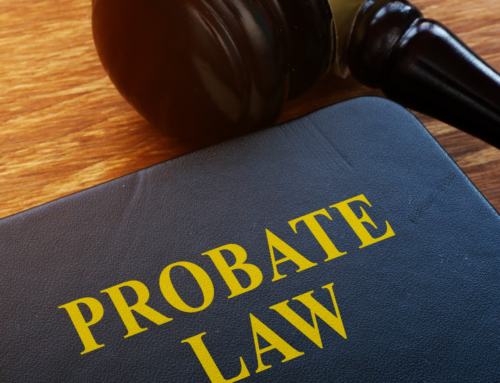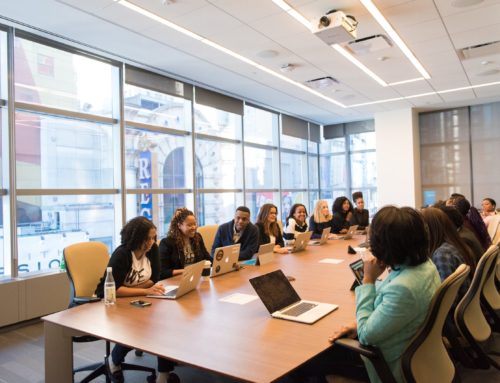July 2020
When private parties are unable to resolve a business dispute, they can file a lawsuit to have the dispute resolved by the civil branch of either our state or federal court systems. The civil litigation process can be bewildering to non-lawyers, since it is full of terminology and processes that aren’t used anywhere else, and which even vary between the state and federal courts. Most business activity these days brings with it the risk of needing to pursue or defend against a lawsuit. Before entering the civil litigation process, it is helpful to gain an understanding of the basic structure and terminology.
Civil lawsuits have several distinct steps: pleadings, discovery, motions, trial, and sometimes appeal. These steps generally proceed consecutively in the order I have listed them, although motions can, and frequently are, made at almost any point. Also, parties involved in litigation can always end it at any point, by mutually agreeing to “settle” the case.
Pleadings
Lawsuits begin with filing pleadings. The plaintiff (first party to file) files a complaint and formally delivers a copy to the defendant(s). The complaint will describe the parties and what the defendant allegedly did or failed to do that harmed the plaintiff, as well as the legal basis for holding the defendant responsible. The defendant has a specific amount of time to appear in court and provide a response to the complaint, usually by filing a pleading called an answer, which contains admissions or denials of the plaintiff’s allegations, and asserts legal defenses to the claims contained the complaint. The defendant may also have counter claims against the plaintiff, which are made part of the lawsuit by filing a cross-complaint which the plaintiff, now also a cross-defendant, must answer. Sometimes a party will challenge a pleading with a demurrer or a motion to dismiss, which can lead to amendments to the pleadings, or to the lawsuit being dismisses by the court.
Discovery
Discovery is the process of asking opposing parties and/or third parties for information about the factual underpinnings of the claims and defenses. It can begin before the pleadings are settled and last right up to the trial. The information is gathered through a variety of formal processes, including interrogatories (written questions), requests for copies of documents, and depositions (questioning witnesses, with answers transcribed by a court reporter), with all responses made under oath. Information can also be gathered from third parties through the use of subpoenas.Discovery is usually the longest part of any lawsuit, and also the most expensive. In business disputes, the process of gathering, reviewing, and exchanging documents, including all relevant electronic data and e-mail, can be particularly costly and time consuming. Of course, the development of the underlying facts which support or refute a claim is the most important part of being able to correctly evaluate the likelihood of winning at trial and/or successfully negotiating a good settlement.
In many disputes proving a claim or defense requires the assistance of expert witnesses who possess the technical knowledge to understand what happened, and why. Expert witnesses are paid consultants who work closely with parties and their attorneys to evaluate cases and prepare them for trial. Their work and analyses then become a further set of information that is subject to a subsequent phase of discovery.
Motions
A motion is an application to the court for an order. Parties use them during all phases of litigation to obtain rulings on specific matters. Some are used at the outset of the litigation to preserve the status quo until trial, for example by asking the court to prohibit a party from selling a disputed asset. They can also be used to challenge the pleadings. During discovery, motions can be brought to resolve disputes over procedures or to compel compliance with obligations to turn over information to the other side. There are also “dispositive” motions, usually brought at or near the end of the discovery process, where a party asks the court to resolve an issue or the entire case without trial.
Trial
Trial is the part of the process that most people are familiar with from film or television. Unlike in the criminal arena, litigants are not always entitled to have their case decided by a jury. Thus, some civil claims are decided by the judge alone, in a “bench trial.” When there is a jury trial, the members of the jury are selected from a panel of community members called in for jury service. During voir dire, potential jurors are examined by the court and the attorneys for fitness and impartiality.Once a jury is selected, the trial begins with each side typically presenting an outline of the case through an opening statement. Each party, generally beginning with the plaintiff, has an opportunity to present their evidence by calling and questioning witnesses, and introducing documents or other physical evidence. The opposing party then has an opportunity to cross-examine those witnesses and challenge the evidence being offered. Once all the evidence has been presented, each party makes a closing argument, attempting to explain to the jury how the evidence should be applied to the law that the judge will instruct the jury is relevant. The jury then deliberates and reaches a decision, generally by answering a series of questions addressing the legal issues raised in the parties’ pleadings. The jury verdict or the court decision is then written up in a judgment.
Appeal
A party dissatisfied with the trial court judgment can ask a higher level court to overturn the result and send it back to the trial court for retrial. The appealing party will submit a brief arguing that a prejudicial mistake was made in the trial court, and the party who won in the trial court will respond, arguing the opposite. Appellate courts usually do not re-examine the evidence, and only reverse cases where they find a serious legal error resulted in a miscarriage of justice.
Alternatives to Litigation
In some instances, parties are contractually bound to arbitrate their disputes. Arbitration is beyond the scope of this discussion but it is, essentially, a private and streamlined litigation process. Most lawsuits and arbitrations are resolved before they get to trial. Thus, it is wise at the outset, and periodically during either process, to evaluate the risks and costs and the potential for a favorable out-of-court settlement. Commonly, the parties will engage the services of a third-party mediator, a professional neutral, who will meet separately with them to help them identify the risks of their case and encourage them to find a mutually agreeable compromise that allows for an acceptable out-of-court settlement.
Conclusion
A client’s understanding of the litigation process and the ability to evaluate the range of outcomes within its overall business objectives is crucial to avoiding litigation in the first instance and, when that is not possible, producing a positive result. The litigation team must be able to work together to combine the evidence with legal experience and expertise to achieve a winning strategy.I hope you find this summary of the litigation process helpful. Our litigators have experience with all aspects of business litigation in state and federal courts, including commercial contract and financing disputes, CEQA litigation, labor and employment matters, class actions, and regulatory enforcement matters. For more information about our litigation services or to contact us for any other reason, please read more about our Civil Litigation and Trials practice area.






